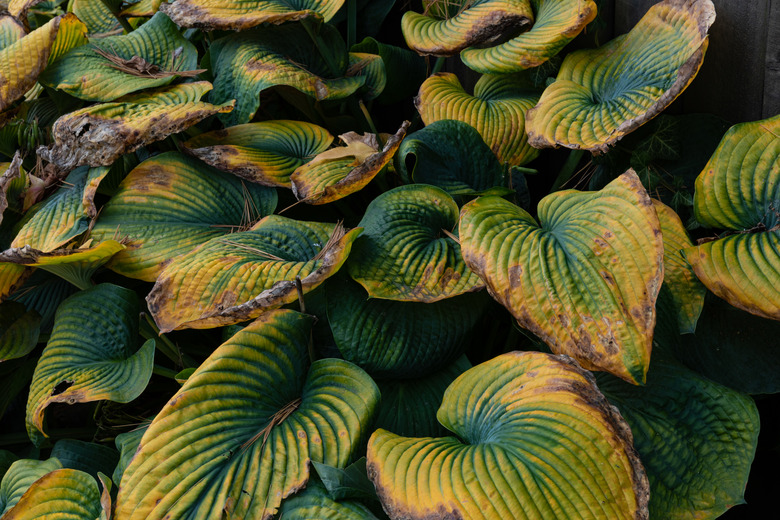Why Are My Hostas Turning Yellow And Brown?
Hostas (Hosta spp.) are among the most highly prized foliage plants, with big, beautiful leaves in glowing shades of green, blue, gold, and ivory. So if you come out to find those same leaves turning brown and yellow, it is time to review the cultural care you are giving them. Their trademark foliage tells you quickly when hostas are not getting what they need.
Meet the Hosta
Meet the Hosta
Reliable and hardy, shade tolerant and lush, hostas offer seemingly endless combinations of foliage hue, leaf shape, and texture. Their fabulous foliage is legendary for its ability to dwell happily in areas with so little sun that most perennials would die back.
Herbaceous perennials depending on the variety, hostas grow from fleshy roots and rhizomes. Leaves emerge from a central crown to form a mounded shrub. The sizes range from a few inches high to 4 feet tall. Tall plants can spread to 6 feet, with individual leaves up to 20 inches long. Leaves can be yellow-green, dark-green, blue green, or variegated, with a form that is oval, heart-shaped, lancelike, or cupped. Some cultivars offer flowers in white or purple or shades in between. They can bloom through fall, and some are fragrant, although their blooms are generally outshined by their leaves.
Care for a Hosta
Care for a Hosta
When you are planting a hosta, remember that this shrub, if appropriately sited and maintained, will likely live longer than the gardener tending it. They are hardy to zone 2 or 3 and aren't too picky about their care. Still, they prefer sites where they can receive dappled shade during much of the day. They also survive deep shade.
These popular perennials do best in rich, moist soil that is high in organic matter. It pays to work organic compost or manure and peat into the soil to create this texture. Plant them in the spring and offer them regular water until they are established. And don't fret about dividing them. Though they accept division, they don't require it for their vitality.
Diagnose Hosta Problems
Diagnose Hosta Problems
When you see yellow or brown hosta leaves, ascertain that the plant is not a hosta with natural leaf color of yellow or yellow-green. Assuming the normal leaves are green or blue, the color changes clearly indicate a hosta problem.
First check the plant's exposure to sunlight. Brown, scorched-looking foliage is most likely a product of sunscald. Dig up the plant or move the container to a location with more shade. If the plant really has enough shade, it may be that the hosta is not getting enough water, so offer more.
Second, check for root damage. Is the soil heavy and perpetually wet in spring and winter? Does the container lack drainage holes? Have the hosta's roots been disturbed or damaged by rabbits or burrowing voles? Any characteristic of the environment that damages the roots of hostas can turn some foliage yellow and brown. Transplanting is again the best option.
Fungi can also affect the petioles. Petiole rot is a common and serious disease of hostas that cuts off the leaves from the main stem, making them unable to receive nutrients. They may turn yellow and brown and pull away easily from the plant. Avoid fungal problems by watering at the ground level, not overhead, and by watering early in the morning to give the sun sufficient time to dry off the leaves.
